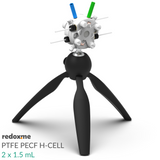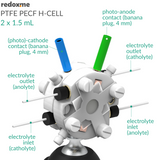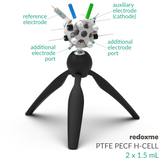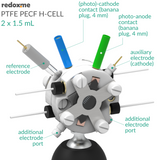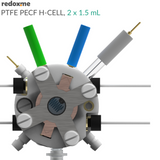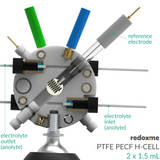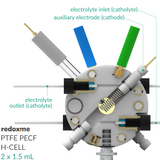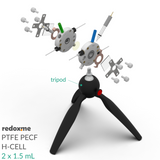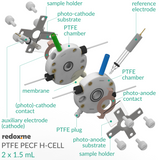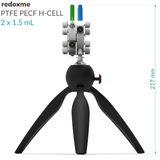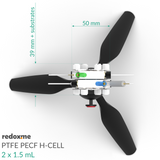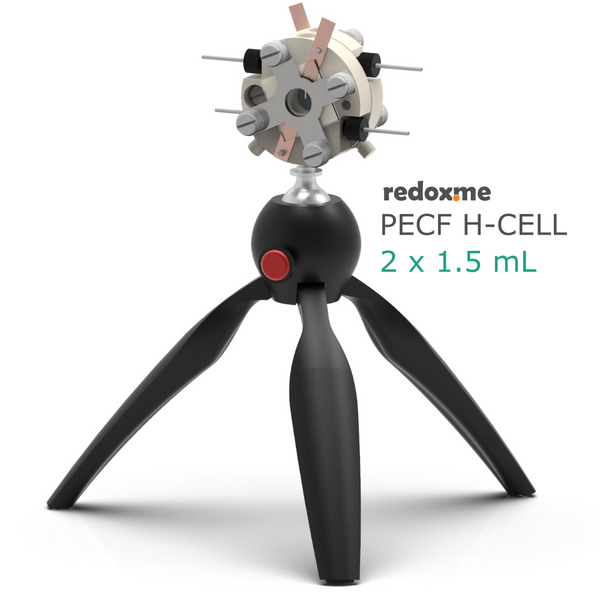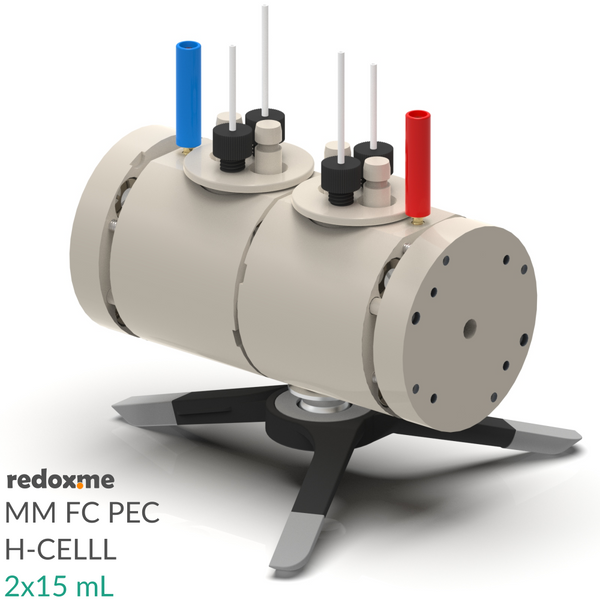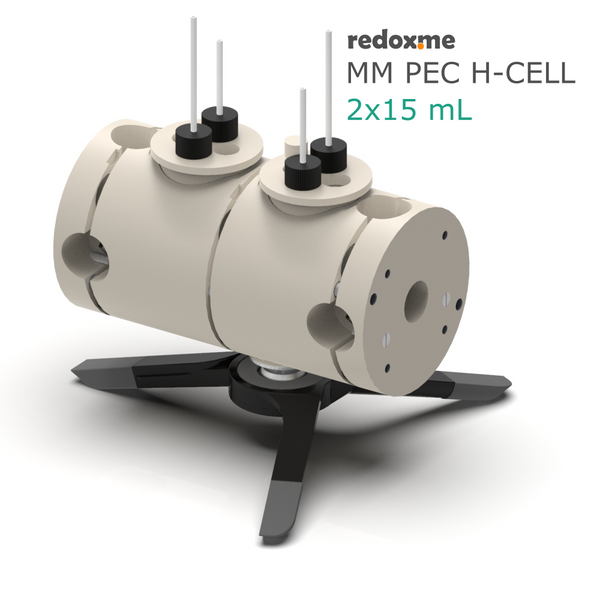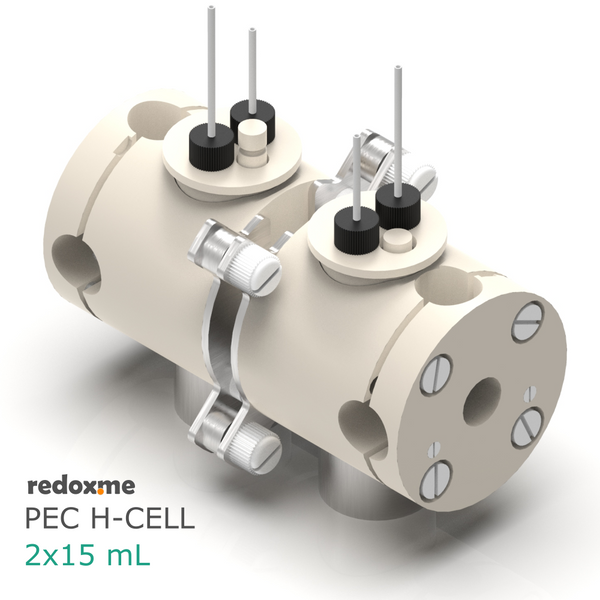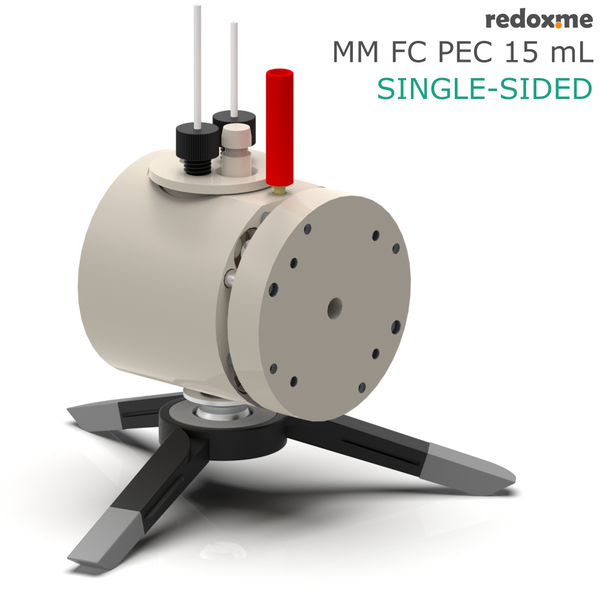PTFE PECF H-Cell 2x1.5 mL - PTFE Photo-Electrochemical Flow H-Cell
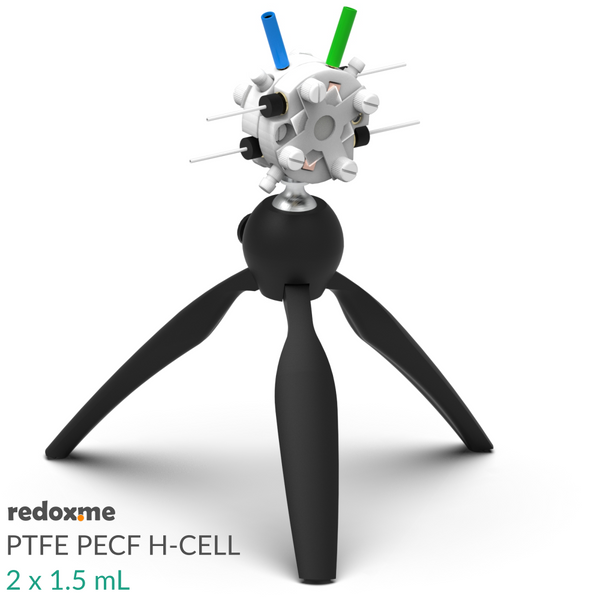
This cell is a sister version of PECF H-Cell 2x1.5 mL. In this cell concept, all elements that stay in contact with an electrolyte or its fumes are made of PTFE and other fluorinated materials (tubing, fittings, and O-Rings). This cell is used wherever PEEK fails, i.e. when using electrolytes containing:
- Aqua regia - HNO3 + HCl
- Benzenesulfonic acid - aqueous C6H5SO3H
- Bromine (liquid) - pure Br2
- Carbolic Acid (Phenol) - C6H5OH
- Carbon Disulfide - CS2
- Chlorine (aqueous and anhydrous liquid) - Cl2
- Chlorosulfonic acid - pure ClSO3H
- Chromic Acid - aqueous H2CrO4 >50%
- Ethylene bromide (anhydrous) - pure CH2CHBr
- Fuming sulphuric acid (Oleum) - pure H2SO
- Hydrobromic acid - aqueous HBr
- Hydrofluoric acid - concentrated aqueous HF
- Nitric acid - aqueous HNO3 >50%
- Sulphuric acid - concentrated (96%) H2SO4
- Sulphurous acid - aqueous H2SO3
A full description of the difference between PEEK and PTFE cells can be found in our blog post.
This is a horizontally mounted, double compartment Photo-Electrochemical Flow H-Cell used to simultaneously investigate thin film photo-anode and photo-cathode. The cell elements are made of PTFE. It well fits aqueous (EPDM/FKM O-Rings) and organic solvent (FFKM O-Rings) electrolyte requirements. The construction is liquid-tight having two separate chambers, each equipped with an electrolyte inlet and outlet. This allows solutions to flow and evacuation of reaction products. Chambers are separated with an ion-exchange membrane (e.g. DuPont’s Nafion® membrane), so the electrochemical products appearing at photo-anode and cathode do not affect the opposite electrode.
Application note
This cell has been designed to investigate the performance of a thin film photo-anode and/or photo-cathode (e.g. nanocrystalline material or conducting polymer) deposited on a rigid or flexible transparent substrate (typically fused quartz glass). The thin film photo-cathode (counter electrode) deposited on a rigid or flexible substrate is mounted in the second chamber. Alternatively, a metal wire counter electrode may serve as a cathode. One or two classical reference electrodes are mounted in flow chambers. The cell should be connected with two external electrolyte reservoirs to circulate the electrolytes using peristaltic pumps. These reservoirs may be equipped with electrodes (e.g. pH meter probes) and the exhaust gases may be supplied to gas analysis (e.g. Gas Chromatography). A gas purging (via mass flow controller) and ice cooling may also be applied. Typical applications include: basic photochemistry, photolytic water splitting, photoinduced charge separation, photocorrosion and CO2 reduction. For troubleshooting instruction see the redox.me blog post.
Operating Video Manual:
Specification
nominal exposure area: 1 cm2
flow chamber volume: 2x1.5 mL
electrode plug diameter: 6 mm
recommended substrate size: 25 mm x 25 mm
maximum substrate thickness: 4 mm
maximum membrane thickness: 4 mm
Intrastat data
HS Code: 90309000
Country of Origin: Sweden
NET weight: 300g
Product includes
2 x flow chamber
2 x sample holder
4 x plug
1 x table tripod – 0028PHYCM
1 x set of Nylon screws – 0029PNYCM
Related products
Fused quartz window glass
Round windows
Glassy (vitreous) carbon substrates – GC 25/25/custom
Membranes

